The Lone Differentiator

What is it that makes the best business leaders so effective? Is it something they know? Something they do? Is it different for every leader? Every era? Every industry? Every situation?
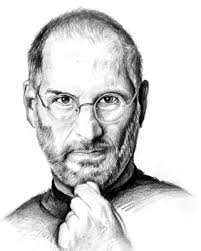
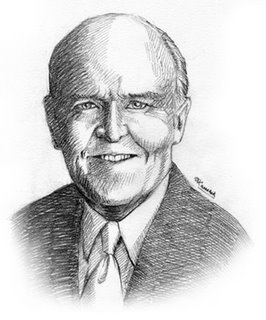
Steve Jobs, arguably the best CEO so far in the 21st century, and Jack Welch, perhaps the best of the 20th, are very different people. But both led teams that generated over a quarter trillion dollars of wealth for their share-holders. Did they had something in common with each other that made them different from everyone else?
If you made a chart of every trait that you thought might help a business leader succeed, with the vertical axis being what percentage of the best business leaders have that trait, and the horizontal being what percent of everyone else had it, it might look something like this:
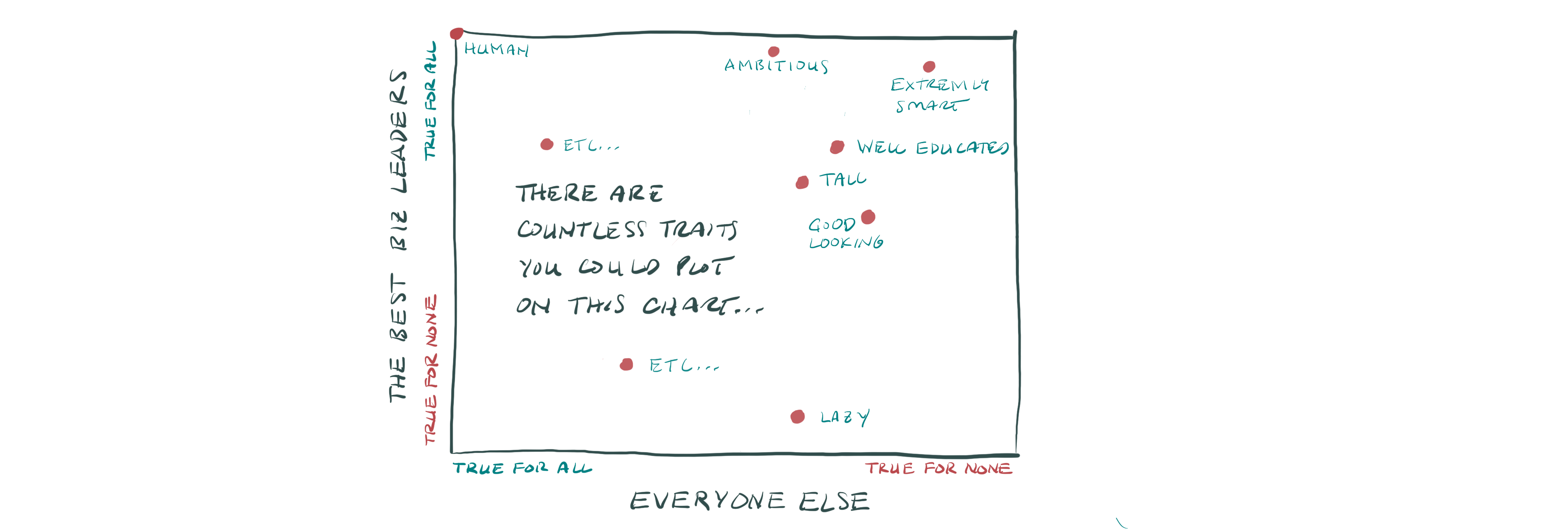
There would be a lot of traits that almost all the great leaders shared like intelligence, ambition and hard work. But those traits would not be exclusive to only the best leaders. There are lots of smart, ambitious, hard-working people that are not quite as good as the best of the best.
Here is the question: Would there be anything in the very upper right hand corner of the grid? Is there something that the best leaders all share, that no one else has? It doesn’t seem very likely. But if there was, would you want to know what it is? And if it were something you could learn, would you want to learn it?
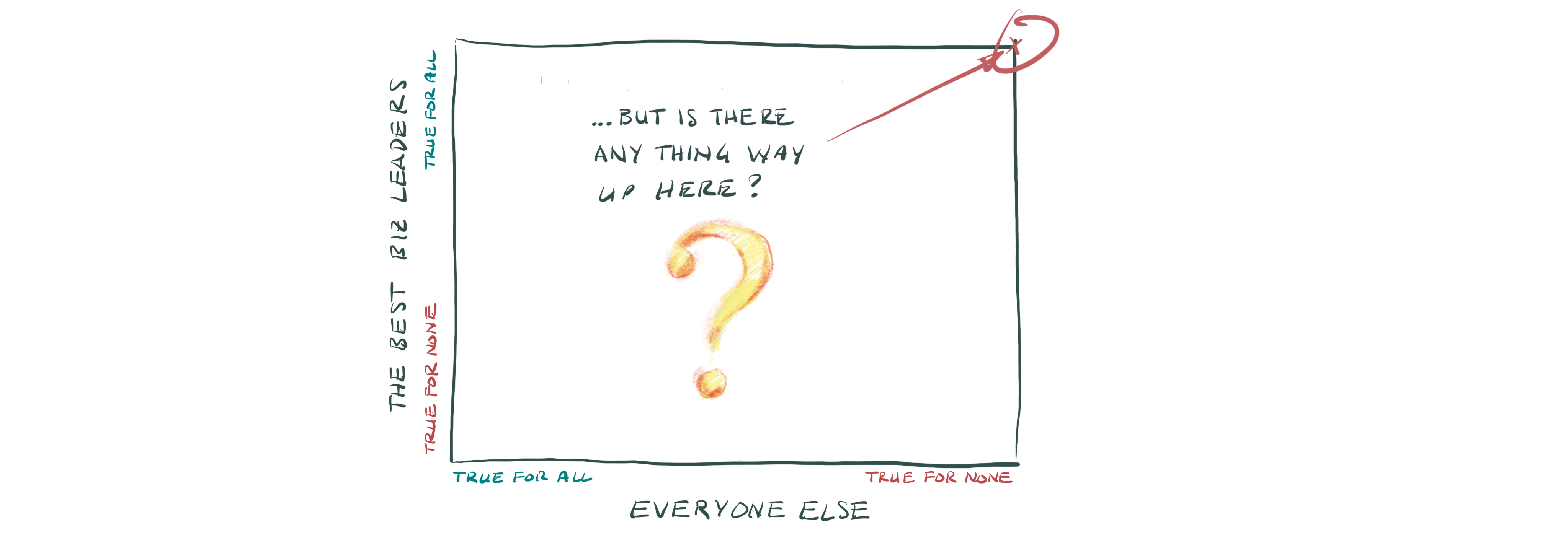
As I looked back over my career I kept being pulled back to how every major success I ever accomplished could be tied back to Bob’s sketch of his learning curve. His Swan Curve. And it made me wonder if the successes of every business leader could be tied back to the Swan curve. Not exactly the Swan Curve itself, but what the Swan Curve implied might be possible. And that brings us back to those two hidden insights, imbedded in the Swan Curve, that I hadn’t noticed until I started this exercise.
The first of the two hidden insights relates to how his learning curve had gotten steeper and steeper up until the day we met. And looking back over his relatively short career to that point, it was obvious that it had. But Bob has drawn the Swan Curve looking backwards over his career to that point. He was using it to say, “This is what happened to me. Take my advice and it can happen to you, too.” What neither of us thought to ask was, “Could it happen to him again?” In other words, had he drawn his future learning curve, would it have kept getting steeper? His graph only included 6 years. For it to include the next 20, he would have needed a notebook the size of a basketball court. If Bob had kept learning faster and faster for 20 years, what the hell would he be doing now?
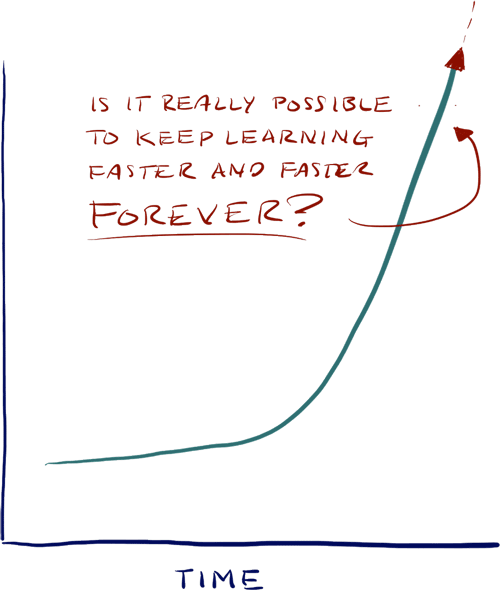
As it turns out, Bob is still a CFO. But the business he is CFO of now is a bit bigger than the GE locomotive business was. In fact, it has twenty dollars of FREE CASH FLOW for every one dollar GE’s locomotive division had in SALES. That’s $20 billion of profit vs. $1 billion in sales. And the divisions of this company have names like, “Non Volatile Memory Solutions Group”, “Internet of Things Group”, and “Programmable Solutions Group”. That’s a long way from the metal bending world of locomotives. Did Bob’s learning curve keep getting steeper and steeper? I’ll let you decide, but it had to be pretty steep for him to become the CFO of Intel, one of the largest technology companies in the world.
The first insight hidden in the Swan Curve is that it is possible to learn faster and faster forever.
In the chapter Rethink Learning we will discuss the reasons why.
The second hidden insight in the Swan Curve is related to the graph’s vertical axis. Bob didn’t bother to label what it was. I just thought of it as “how smart he was.” It took me 20 years to realize there was another obvious question that had gone unanswered for all of these years: If the line was Bob’s learning curve, what the hell was he learning?
He wasn’t learning quantum physics, or the taxonomy of fish species in the Indian Ocean. One doesn’t need to learn EVERYTHING to become a great business leader. The fact is, the less you need to learn the better. You only have so much time to learn it.
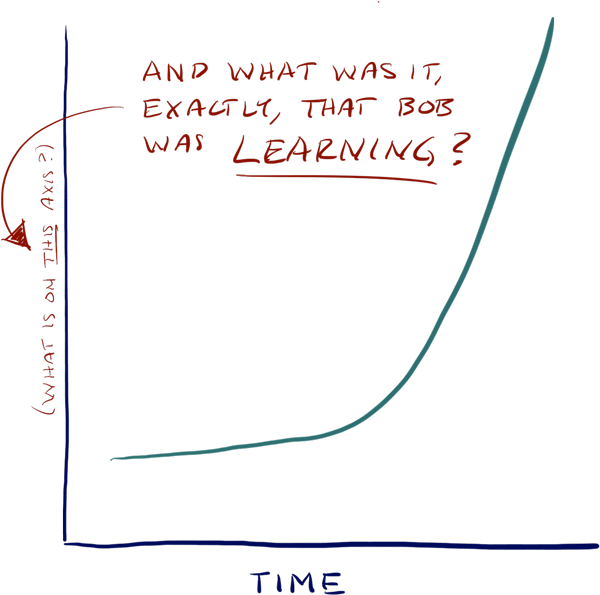
Oddly, I probably had the answer to that question before I discovered the question itself. It didn’t take me long in GE to figure out all of the best business leaders I worked with, the ones who kept knocking bigger and bigger jobs out of the park, were more than just fast learners. The had a way of asking questions that captured the very essence of what the business needed to accomplish. They seemed to know exactly what they DIDN’T know that they NEEDED to know to solve whatever problem was before them.
I learned over time as I got better at asking questions myself that they generated this ability with a relentless and unshifting focus on ADDING VALUE. To the exception of everything else. They were never scheming their next political move. They were never focusing on how to get the next promotion. They were never asking themselves questions like, “What will it take for me to get to the C-Suite?” Rather, I found that they were always asking themselves -- and asking others -- some form of the question, “How can I add value?” “How can I increase the long term profitability of this company?” “What can I do right now to make this situation better?” It never was in those exact words. The words were always tied to the important specifics of each situation. But the meaning was the same every time. “How can I add value?”
The reason they are all, every last one of them, focusing on adding value is because adding value is the objective of business leadership. They all may have had different reasons for wanting to be business leaders. But they all learned, most of them very early in their careers, that the objective is always to add value. (We will define precisely what value is in “The Value Equation” chapter. For now, think of it as growing the long term profitability of the company).
Adding value is to business what scoring points is to basketball. You may not think that scoring points in a basketball game makes the world a better place, but if you want to be a great basketball player, you best figure out a way to help your team score points. That’s the objective. Getting good at anything means getting good at achieving that thing’s objective. Likewise, you may not think making a lot of profit in a business makes the world a better place, but right or wrong, if you want to be a great business leader, you’re going have to figure out how to help your business be more profitable. Because that’s the objective.
So the Swan Curve is more than just a learning curve. It’s a getting-better-at curve. And it’s a getting-better-at-a-very-specific-thing curve. And that very specific thing that Bob kept getting better at faster and faster was adding value to the organization. The label on the vertical axis should have been “ability to add value.” In other words,
The second hidden insight is that what the best business leaders are learning is how to add value.
So, let’s get back to your grid of business leadership traits. If we were to plot the trait, “learning, faster and faster forever, how to add value,” where should we plot it? Let’s start with where to put it vertically. What percentage of the world’s best business leaders are getting better faster and faster at adding value? They all are. Every last one of them. The second their learning curve slows down they will be left in the dust by those that keep learning faster and faster. So we plot the trait at the top of the chart.
Now where do we put it horizontally? How many people that are not among the world’s best business leaders are learning at an ever increasing rate how to add value? I would argue none of them are. If you keep learning faster and faster it is actually very difficult not to become among the very best. Imagine trying to drive to a destination as quickly as possible. Flying down the freeway, skidding around every corner. Now imagine you were racing against someone who may have started out slower than you, but ACCELERATED the entire time. The entire time the acceleration of their car was pushing them into their seats. No braking, no slowing down to go around a corner. Their magical car gets to ignore all of that and just keeps speeding up. And the race is who goes the farthest in 30 years. You are not even going to end up on the same planet.
I don’t think it’s possible to keep getting better faster and faster and not end up among the very, very best. You just end up getting too good. And that means where we plot “learning, faster and faster forever, to add value” has to go all the way to the right. No one that does it is not going to become one of the best. So the upper right hand corner of the grid of leadership traits is not empty. There is at least one thing in it. And I think it's the only thing. No matter what else great business leaders start with, it was the lone differentiator that kept making them better and better at the one thing that matters most.
The Lone Differentiator, the one thing that separates the best business leaders from everyone else, is that the best learn, faster and faster forever, how to add value.
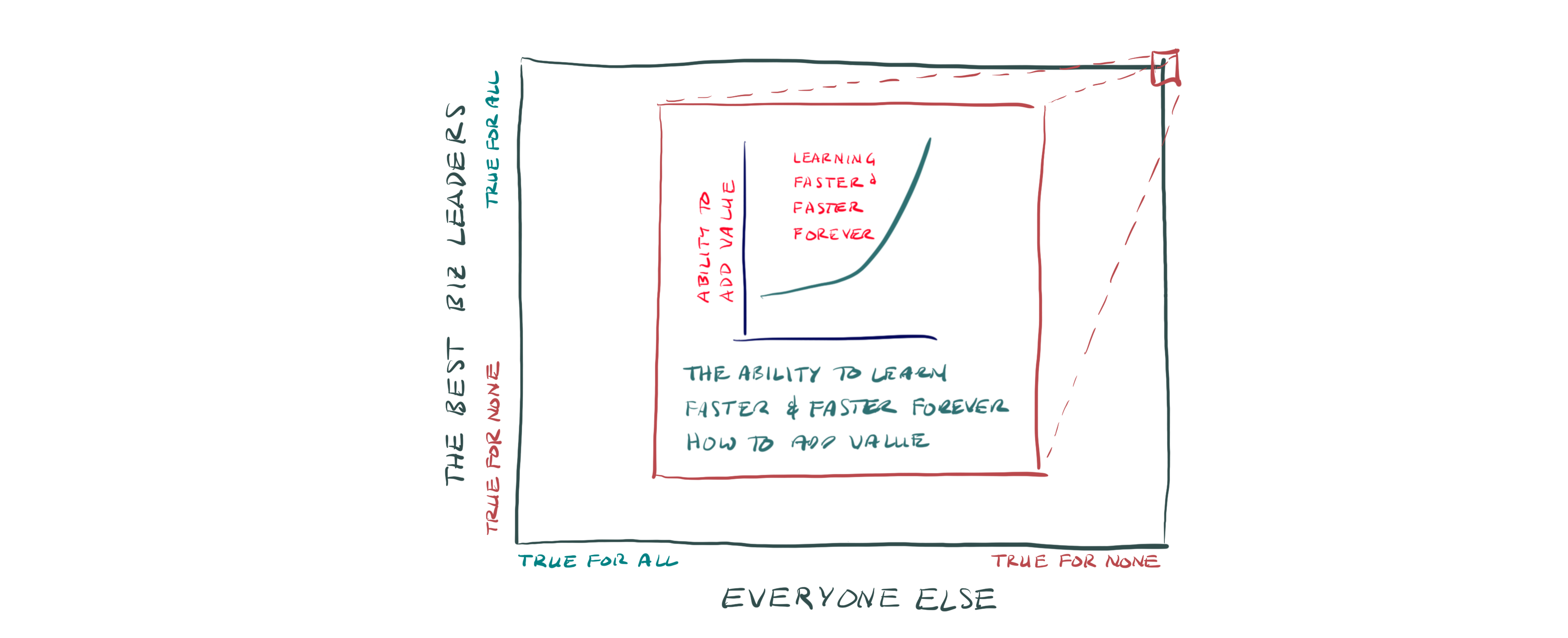
Those that learn the right stuff, the fastest, for the longest, become the best. I aim to convince you that the best business leaders can double their ability to add value – what I call their Business Leadership Capacity – in a single year. And that they are able to double it in ANY given year if the conditions are right. Even if they just doubled it the year before.
It is how leaders like Bob Swan, Jack Welch, Elon Musk, Richard Branson, Steve Jobs – you name the great leader – generate the capability to run and grow enterprises of enormous size, complexity and inertia. I’ve witnessed it with my own eyes. And I aim to convince you that you can learn the right stuff faster and faster too. And that you can double your business leadership capacity this year, and next year, and if you manage to line things up just perfectly, perhaps every year, as well.
So, if that sounds like a good idea, follow me.
We will start by getting a better understanding of what “VALUE” actually is and how one goes about “ADDING IT.” And then we’ll talk about how you can get better and better at it, faster and faster, forever.